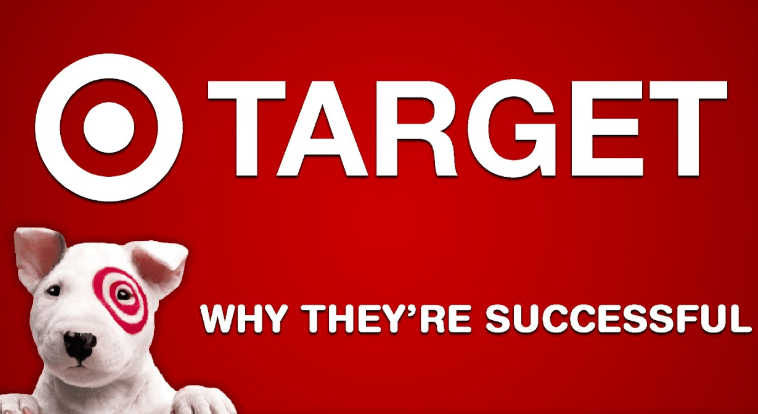Target Net Worth: Retail Giant’s Financial Overview

Target’s net worth serves as a critical indicator of its financial health, reflecting not only its ability to generate consistent revenue but also the strategic initiatives that underpin its market position. With diverse revenue streams and a focus on innovation, the retailer is navigating a complex landscape marked by evolving consumer preferences. However, the true implications of these factors on Target’s future prospects warrant closer examination, particularly in light of emerging trends that could further shape its trajectory. What remains to be seen is how these elements will converge in the coming years.
Overview of Target’s Net Worth
As of the latest financial reports, Target’s net worth reflects a robust market position, driven by consistent revenue growth and strategic asset management.
A comprehensive net worth analysis reveals strong financial metrics, including significant asset valuation and manageable liabilities.
These factors contribute to Target’s ability to navigate market fluctuations effectively while maintaining investor confidence and operational flexibility in an increasingly competitive retail landscape.
See also: Rebecca Lobo Net Worth: Basketball Player and Analyst’s Earnings
Revenue Streams Breakdown
Target’s revenue streams are diversified across multiple categories, including retail sales, online transactions, and exclusive brand offerings, each contributing to the company’s overall financial health and stability.
The implementation of revenue diversification strategies has allowed Target to mitigate risks associated with seasonal sales analysis, ensuring consistent performance throughout the year.
This multifaceted approach positions Target favorably against market fluctuations and competitive pressures.
Strategic Expansion Initiatives
The company’s strategic expansion initiatives aim to enhance market presence and leverage growth opportunities, building on the solid foundation established by its diverse revenue streams.
Through targeted market penetration efforts and brand diversification strategies, Target is positioning itself to capture emerging consumer segments and adapt to shifting market dynamics, ensuring long-term sustainability and competitive advantage in the retail landscape.
Impact of Consumer Trends
Consumer trends are increasingly shaping the operational strategies of retail giants like Target, with significant implications for their financial performance.
The rise of e-commerce, growing demand for sustainability practices, and evolving demographic preferences are critical factors that require careful consideration.
Analyzing these trends will provide insights into how Target can maintain its competitive edge and adapt to the dynamic retail landscape.
E-commerce Growth Dynamics
E-commerce has experienced significant growth driven by evolving consumer preferences and behaviors, prompting retailers to adapt their strategies to capture online market share effectively. Key e-commerce trends include increased mobile shopping, personalized experiences, and the rise of social commerce, which are influenced by advanced digital marketing techniques. Understanding these dynamics is essential for retailers aiming to thrive in a competitive landscape.
| Trend | Impact on Retailers | Digital Marketing Role |
|---|---|---|
| Mobile Shopping | Increased sales | Targeted ads and SEO optimization |
| Personalization | Enhanced customer loyalty | Data analytics for tailored offers |
| Social Commerce | Broader audience reach | Influencer collaborations |
| Subscription Models | Predictable revenue | Email marketing campaigns |
| Omnichannel Experience | Seamless integration | Cross-platform advertising |
Sustainability Practices Influence
How do sustainability practices shape consumer preferences in today’s retail landscape?
Increasingly, consumers prioritize brands that engage in sustainable sourcing and eco-friendly initiatives.
These practices not only enhance brand loyalty but also drive purchasing decisions, as eco-conscious consumers seek products that align with their values.
Retailers adopting such strategies are better positioned to capture market share and meet the evolving demands of their clientele.
Shifting Demographic Preferences
The increasing emphasis on sustainability is closely intertwined with the shifting demographic preferences observed in the retail sector, as younger consumers, particularly millennials and Gen Z, demonstrate a heightened demand for brands that reflect their values and social consciousness. This shift influences generational spending patterns, shaped by cultural influences that prioritize ethical consumption and social responsibility.
| Demographic Group | Key Preferences |
|---|---|
| Millennials | Sustainability, Brand Ethics |
| Gen Z | Social Responsibility, Diversity |
| Baby Boomers | Quality, Brand Loyalty |
| Gen X | Value for Money, Convenience |
| Silent Generation | Traditional Values, Reliability |
Innovation and Technology Investments
Target has strategically allocated significant resources towards innovation and technology investments, aiming to enhance operational efficiency and improve customer experience across its retail platforms.
The company’s focus on digital transformation is evident through robust AI integration, which streamlines inventory management and personalizes shopping experiences.
These advancements not only bolster competitiveness but also align with evolving consumer expectations, fostering a more agile retail environment.
Competitive Landscape Analysis
Analyzing the competitive landscape reveals that Target operates in a dynamic retail environment where both traditional rivals and emerging e-commerce players continually reshape market dynamics.
To maintain market share, Target employs aggressive pricing strategies that contrast with competitors.
This approach not only enhances customer loyalty but also positions Target favorably against discount retailers and online giants, ensuring relevance in an evolving marketplace.
Future Financial Projections
In the context of evolving market conditions and consumer behavior, future financial projections for the retail giant indicate a potential for steady revenue growth driven by strategic investments in technology and supply chain optimization.
Financial forecasting reflects a robust market analysis, highlighting opportunities for Target to enhance operational efficiency and customer experience.
This strategic approach positions Target favorably for sustained profitability in an increasingly competitive landscape.
Conclusion
In summary, Target’s impressive net worth exemplifies the art of turning shopping into a financial masterpiece.
With revenue streams flowing like a well-oiled machine and strategic expansions that rival the ambitions of a reality TV star, the retailer artfully navigates consumer trends while embracing technology like an eager millennial.
As the competitive landscape shifts, Target remains a formidable player, poised to thrive—proving that in the retail game, fortune favors the savvy shopper.




